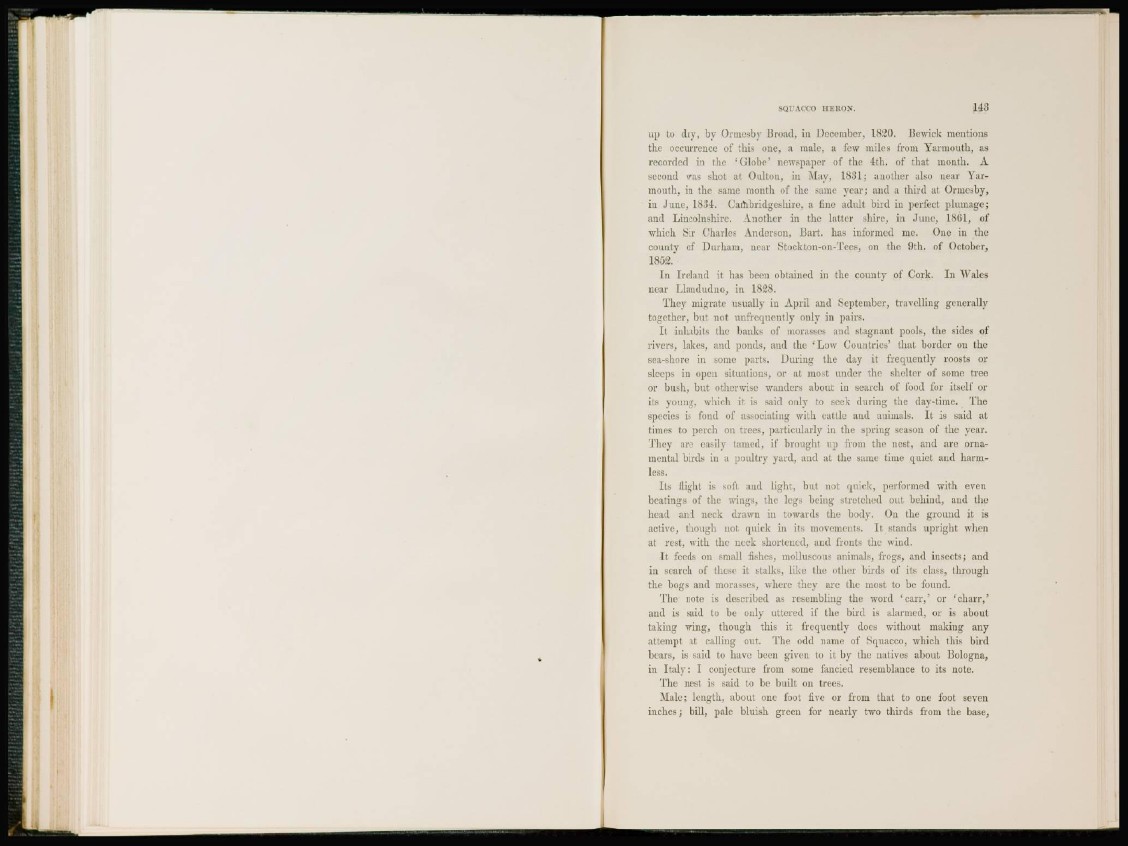
up to dry, by Ormesby Broad, in December, 1820. Bewick mentions
tbe occurrence of this one, a male, a few miles from Yarmouth, as
recorded in the 'Globe' newspaper of the 4t.h. of that month. A
second was shot at Oulton, in May, 1831; another also near Yarmouth,
in the same month of the same year; and a third at Ormesby,
in June, 1834. Cambridgeshire, a fine adult bird in perfect plumage;
and Lincolnshire. Another in the latter shire, in June, 1861, of
which Sir Charles Anderson, Bart, has informed me. One in the
county of Durham, near Stockton-on-Tees, on the 9th. of October,
1852. •
I n Ireland it has been obtained in the county of Cork. In Wales
near Llandudno, in 1828.
They migrate usually in April and September, travelling generally
together, but not unfrequently only in pairs.
I t inhabits the banks of morasses and stagnant pools, the sides of
rivers, lakes, and ponds, and the ( L o w Countries' that border on the
sea-shore in some parts. During the day it frequently roosts or
sleeps in open situations, or at most under the shelter of some tree
or bush, but otherwise wanders about in search of food for itself or
its young, which it is said only to seek during the day-time. The
species is fond of associating with cattle and animals. It is said at
times to perch on trees, particularly in the spring season of the year.
They are easily tamed, if brought up from the nest, and are ornamental
birds in a poultry yard, and at the same time quiet and harmless.
Its flight is soft and light, but not quick, performed with even
beatings of the wings, the legs being stretched out behind, and the
head and neck drawn in towards the body. On the ground it is
active, though not. quick in its movements. It stands upright when
at rest, with the neck shortened, and fronts the wind.
I t feeds on small fishes, molluscous animals, frogs, and insects; and
in search of these it stalks, like the other birds of its class, through
the bogs and morasses, where they are the most to be found.
The note is described as resembling the word ' c a r r , ' or ' c h a r r ,'
and is said to be only uttered if the bird is alarmed, or is about
taking wing, though this it frequently docs without making any
attempt at calling out. The odd name of Squacco, which this bird
bears, is said to have been given to it by the natives about Bologna,
in Italy: I conjecture from some fancied resemblance to its note.
The nest is said to be built on trees.
Male; length, about one foot five or from that to one foot seven
inches; bill, pale bluish green for nearly two thirds from the base,